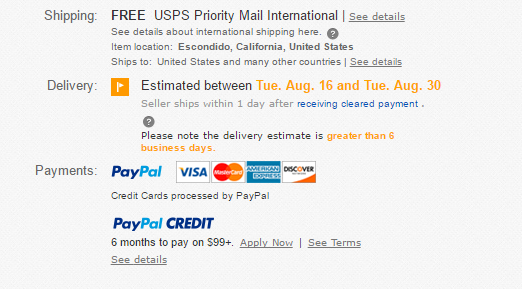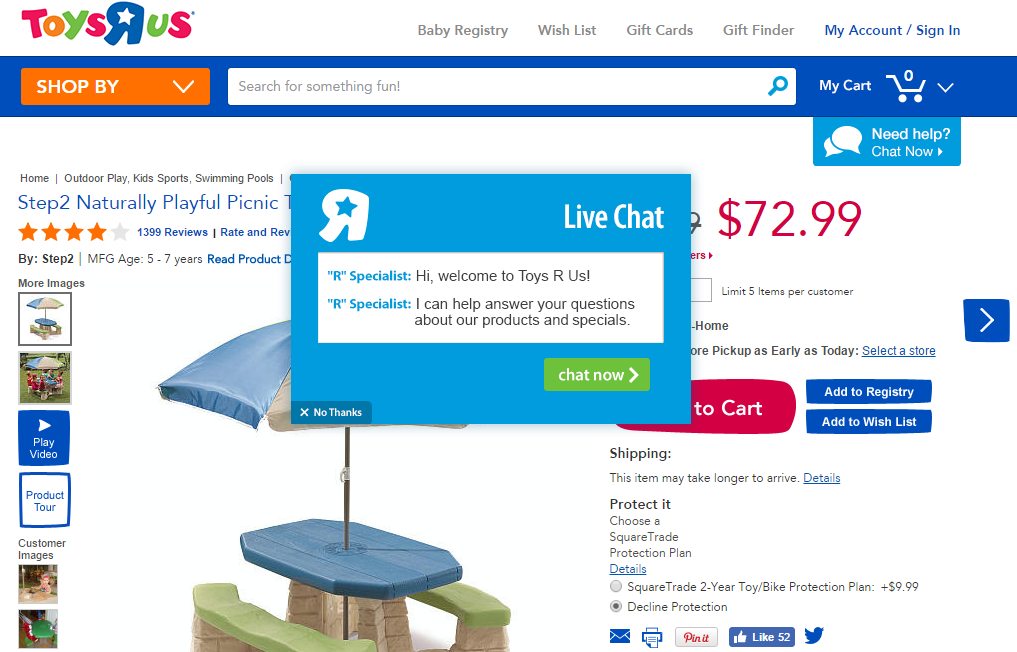5 Ways for Ecommerce Websites to Build Trust

[Guest article by Brandon Leibowitz]
Trust is a crucial element in influencing consumers’ purchase decisions. Experts at the Singapore Management University published an extensive study on the relationship between trust and consumers’ intent to buy. The study revealed that people are more likely to make a purchase from a website if they have both high levels of trust and low levels of perceived risk when using the website. To build ecommerce trust, online stores must optimize their websites to make potential customers feel comfortable making a purchase.
5 Ways for #Ecommerce Websites to Build Trust pic.twitter.com/zHKZ3tv47j #webdesign Share on XHere are five proven ways to do just that:
#1. Add Trust Badges and Security Seals
Displaying security seals and trust badges are a great way to reduce the perceived risk of shoppers on your website. It eases their worry and makes them more inclined to buy something. In fact, a study conducted by Yankee Group Research, Inc. found that 71% of consumers find it important for ecommerce sites to display a trust seal or logo.

Several case studies have shown an increase in conversions after displaying a trust badge. One Visual Website Optimizer study found that adding a “100% Money Back Guarantee” badge helped in increasing conversions by 32%.
Here’s an excellent example of a Money Back Guarantee badge from eBay. The badge is complete with the eBay logo and there’s a description of the guarantee just underneath the badge.

Perhaps the most common types of trust badges are security seals from trusted internet security companies and business organizaations like the Better Business Bureau. Most of these, of course, involve paying the external company for a membership or use of their service.
Trust symbols and badges increase the credibility of your website pic.twitter.com/zHKZ3tv47j Share on XYou can also create your own credibility badges. eBay gives additional assurance to shoppers by displaying a “Top-Rated Plus” badge next to the top sellers on the site.

Of course, if your website isn’t well-known or trusted, these self-created symbols will be less effective.
#2. Use a Reputable Payment Gateway
Building trust and reducing risk go hand-in-hand. With hackers and credit card fraud constantly in the news, providing credit card information is seen as risky by many consumers. To counter this, you can use a payment gateway service that they trust. This means using a service that is recognized by consumers and is seen as being trustworthy.
PayPal is perhaps one of the most popular services especially on an international level. Particularly if you are catering to an international audience, it may be your best bet to assure customers that their payment information is secure. Here’s another great example from eBay, which displays a message telling shoppers that credit card payments are processed by PayPal.

#3. Display Genuine Reviews from Real Customers
You can make claims about the wonderful features and benefits of your product, but are customers going to take your word for it? Back up your claims with real reviews from real customers. These should be displayed on the product page. A Moz study found that 67% of consumers read online reviews before they make a purchase. Without reviews, you risk two-thirds of your customers having lower trust in the product’s quality and performance.
It’s important to ensure that you avoid displaying only positive reviews, as this may seem suspicious in the eyes of a shopper. If your reviews look edited or screened, you could end up actually reducing trust. An excellent example of good customer review displays can be seen on the product pages of Toys “R” Us, which displays customer ratings right under the product name.

When you click on the number of reviews displayed next to the star ratings, you’re automatically taken to the Customer Reviews Summary section. Notice how the reviews are neatly sorted with useful statistics. It shows that 99% of customers recommend the product and also gives some details about the average reviewer profile. There’s a list of pros, cons, and best uses of the product.
Honest customer reviews are more trusted than your own content pic.twitter.com/zHKZ3tv47j #webdesign Share on XThe best part about this section is the way they display the most useful positive reviews and most useful negative reviews. This is a great way of showing shoppers that your goal is to help them find the product that will best fit their needs. Even if negative reviews discourage them from buying a particular product, their trust in your website will increase.

#4. Make it Easy to Get Help
When shopping online, most people have questions that can impact their decision to make the purchase. What is your shipping policy? How are returns handled? Is there a full refund if they don’t like the product. Make sure all this information is easily accessible for shoppers, so they can have their doubts clarified and get a step closer to making their purchase decision.
Make sure you have your contact details like phone number, store/office address, customer care email address, etc. are also clearly displayed. This will give customers the assurance that they can always reach out to you in case they have a problem. You can also use a Live Chat feature. This will let you answer questions and address objections on a real-time basis.
Toys “R” Us gives shoppers the option to access Live Chat help from their product pages. Additionally, the Live Chat window pops up automatically when you’re idle on the page for too long, which could signify that you’re probably having some trouble understanding something about the product or the purchase process.

#5. Show Your Product in Action
Sometimes, customers may trust you but are unsure about the quality or real appearance of the product itself. While they trust your description and specifications, that may not be enough to allay all their concerns. One way to reduce that worry is to offer better views of the product with large, high-quality images that show the product from different angles and can be zoomed to magnify. You can use rotatable 360-degree views of the product to show customers an even better more thorough picture of how the product actually looks. For some products, it may be helpful to add product videos that show the product in action.
Luggage retailer eBags.com makes good use of videos. Often, their videos go beyond merely illustrating the product by providing useful “how-to” information. This video not only shows their packing cube products in detail, it also shows consumers how to pack for a trip in an efficient and organized way:
Show Your Product in Action to Build Trust #Neuromarketing #webdesign pic.twitter.com/zHKZ3tv47j Share on X
Conclusion
These are a few of the most powerful ways to build ecommerce trust, but there are many more techniques you can use. Check out Peep Laja’s checklist of 39 credibility builders, Stanford University’s Web Credibility Project, and the wealth of trust-building articles here at Neuromarketing. Have trust-related questions or a technique you have used successfully? Feel free to share your thoughts in the comments below.
5 Ways for #Ecommerce Websites to Build Trust #Neuromarketing #webdesign pic.twitter.com/zHKZ3tv47j Share on X
